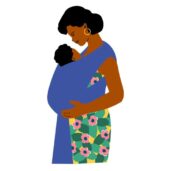CZ/EN
The big toe – director of the foot…
At the beginning, I would like to quote one of my clients: “So, using the big toe is a very revolutionary matter! It seems to solve the problem with the right knee and walking downhill…” Feedback like this seems to come back to me more and more often. Therefore, today’s article will be about the big toe and its very important function for the foot.
Toes are generally kind of a “forgotten territory” to us; a place that is far away, closed (often in inappropriate shoes that do not copy the shape of the foot), a place which should not be touched or looked at, so why should we think about them and perceive them at all. Many people can’t even tell whether someone is touching their second or third toe. Toes, and the big toe in particular, are extremely important for the proper function of the foot when walking, running, during any locomotion in general. Their activity during the foot-roll allows us to move forward (which is the purpose of walking), with the big toe giving the foot most of the propulsion force. Due to insufficient activity of the big toe, not only the biomechanics of the foot, but of the entire lower limb and the rest of the body is altered and the uneven load on various structures occurs. This leads to muscle disbalance and can result in a number of problems, such as knee pain, ankle pain, Achilles tendon overload, foot-arch pain and other issues. Among other things, altered biomechanics means less economical movement, and thus can lead to lower performance. In translation – reeducation of the movement stereotype („technique“) can solve a painful condition, but also help the athlete to perform better.
The biomechanics of walking is a very complex matter, literally every joint in the body is involved in it. If we focus only on the lower limbs, the hip, the knee, the ankle, all the joints of the forefoot and toes must work together. Functionally, we can describe the so-called spiral stabilization. How does that work? If one twists a towel while squeezing, it becomes firmer. And the lower limb works similarly. When walking, a number of rotations take place going against each other. This creates stability and allows the forward movement. Even foot work has its „rules“.
But back to the big toe and its role. The big toe not only participates in the rebound, but generally has a stabilizing function. The interaction of the activity of the flexor (the bending muscles) and the abductor (the muscle pulling the big toe apart from the rest of the toes) of the big toe in particular is important already in the absorption of force upon the impact of the foot compensating for surface irregularities; further when moving the center of gravity forward and finally when rolling the foot off. There are basically two most common issues related to the big toe that I see in my clients, and both lead to non-ideal biomechanics and painful conditions.
- The big ote is not loaded in its longitudinal axis and is pulled closer to the other toes.
- When the foot rolls off, the thumb bends, then it does nothing and the foot is just lifted and moved forward.
Both of these disorders mean essentially the same thing – that the person does not use the big toe at all when walking.
So what should the action of the big toe look like? Let’s start from the beginning – from the heel-strike. After the impact of the heel, the rest of the foot is gradually placed on the ground. This is where the big toe goes into action – the abductor muscle straightens it to the axis of the 1st forefoot bone to transmit the landing force in the right direction, and the flexor muscle decelerates landing of the forefoot, helping to absorb the impact. During the subsequent transfer of weight from the back of the foot towards its front part, both muscles work together to support the arches of the foot, both longitudinal and transverse (the foot does not have only two arches – longitudinal and transverse, but there are several of them). This contributes to the stability of the ankle and the whole lower limb preventing the compression of the plantar nerve (the nerve of the foot, pain around the joint under the 2nd to 4th finger are typical for this issue). Then the foot-roll comes. As soon as the swinging leg passes the standing one, the rebound begins and the heel rises. Here comes another flexor (bending muscle) of the big toe, the long flexor that starts at the calf and apart from the big toe also controls the ankle. The long flexor thus starts the rebound (just to make it simple, there are a number of other muscles on the foot that contribute to its function), but at the very end of the rebound, the short flexor of the thumb is also involved, which adds the last but very important propulsion force.
So what happens when the muscles of the big toe are not working properly? Without a well-functioning big toe, the entire lower limb is less stable. Whenever something in the body does not work as it should, something else must compensate for it and is then overloaded. Due to a non-functional big toe, the arch of the foot may collapse, and thus the already mentioned compression of the plantar nerve can occur. It also contributes to the instability of the ankle, overloading of the Achilles tendon and calf muscles in general, uneven load (and therefore pain) of the knee, and disbalances can chain to the hip, pelvis, abdomen and shoulder on the opposite side. But most often the issues are knee pain, pain in the Achilles tendon and arch of the foot. These troubles often go away when you start using your big toe again.
And what about your big toe? Come on, try to take a slow step and focus on the foot roll… Stop at a stage where only the toes will be in contact with the floor. Can you lift the MP joint of the big toe with the activity of the flexor of the big toe (metatarsophalangeal joint = joint between the big toe and the 1st of the forefoot bones)? This action should be part of every step, in walking, running and other activities. Is that really so? Can you control your big toe? If not, exercise ; -) …
Fig. 1: Muscles of the foot
Author: Mudr. et Bc. Michaela Krákorová








